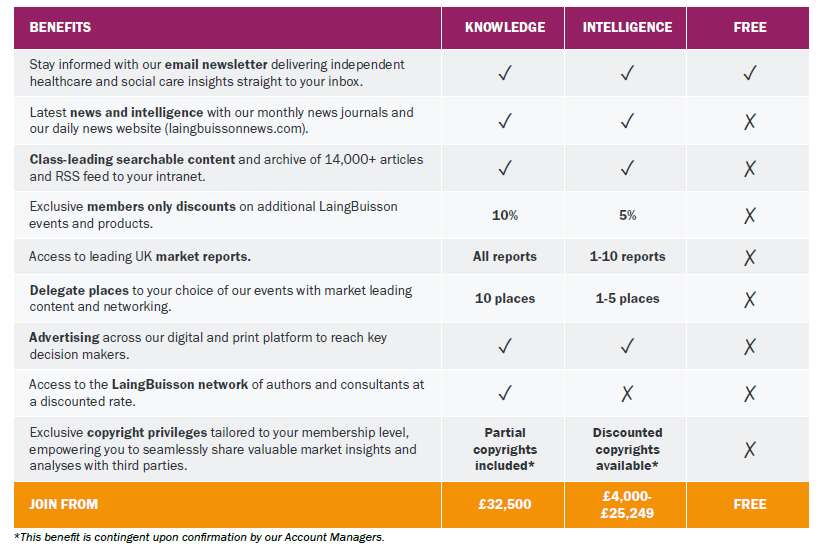
Government policy and client preference helps drive a trend in migration to Supported Living settings
LaingBuisson has published the 6th edition of its respected Adult Specialist Care UK Market Report.
- Trend of clients’ and councils’ preference for Supported Living as opposed to Care Homes
- Nearly 95% of services are now provided by independent sector
- Underlying profit of adult specialist care providers has nearly halved in the preceding 11 years
- Market concentration remains fractured
- Workforce availability still a big issue for the sector
The report, sponsored by JLL, focuses on the social care market for adults under the age of 65, and particularly residential care and supported living. In addition to LaingBuisson’s proprietary research, it makes use of the latest official data for 2021/22 recently published by NHS Digital. This UK market is now worth £14.5 billion UK, with the top four care groups contributing only 7.2% of the total revenue, the market remains a fractured one. Approaching 95% of adult specialist care services are now provided by independent sector organisations which operate in a competitive market funded mainly by local authority social service departments.
The biggest negative effect has been on workforce availability. Initially, there was a Covid ‘dividend’ as the retail and hospitality sectors were locked down and staff migrated to social care. But the recruitment and retention environment rapidly switched as the economy re-started. Social care employers have responded by recruiting overseas, aided by some relaxation of immigration controls.
The underlying profitability of larger adult specialist care home providers has fallen over the last decade from an EBITDAR margin of about 30% in 2011 to 17% in 2022.
On the positive side, Covid has fast-forwarded digitisation across the health and social care sector. This can be expected to drive some efficiencies in commissioning and provision of social care, as well as enhancing safety and quality of care.
While the adult specialist care sector has shown modest growth in real terms, supported living housing has experienced rapid growth in terms of service users and it is predicted to continue to in the coming years. This is partly fuelled by the preference of clients and their families to be in supported living accommodation as opposed to care homes. The benefit for cash-strapped councils is that the property costs of supported living are less expensive and can be transferred to central government funded Housing Benefit.
Report author, William Laing said:
“Against the background of a modest real terms expansion of the funding envelope for adult specialist care. Overall, spending on supported living is expected to continue growing its share, as registered residential care services for less highly dependent service users continue their slow migration to supported living settings. Most service users and their families prefer supported living to residential care, and this is reinforced by the financial advantage to local authorities of shifting property costs onto central government funded Housing Benefit.
“Over recent years, public policy has consistently supported the change in the balance of care. The government’s 2018 announcement that it will continue to fund supported accommodation rents through the welfare system (Housing Benefit) and will not subject rents to mainstream Local Housing Allowance (LHA) caps with discretionary top-ups, has effectively de-risked future rental streams, which long-term investors rely on to justify investment.”






